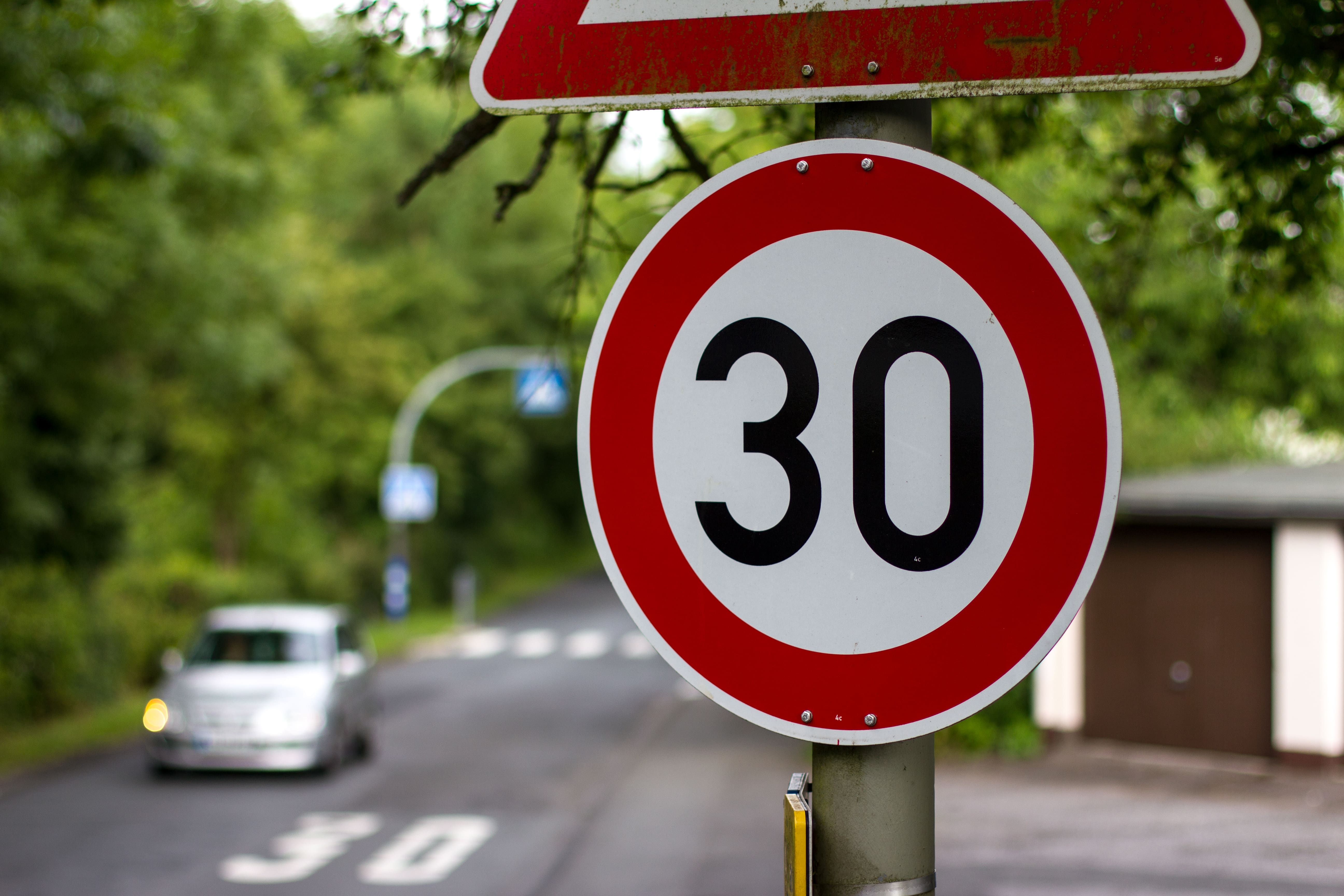George Yannis is a Professor in Traffic and Safety Engineering and Director of the Department of Transportation Planning Engineering at the National Technical University of Athens (NTUA). He leads the NTUA Road Safety Observatory, a Center of Research and Innovation Excellence with global recognition for its highly valuable contribution to safer mobility for all, in Greece, in Europe and worldwide. However, he is not just a leading scientist in road safety, he is also a passionate advocate for promoting sustainable and safe mobility. Through his campaign of running 30 Marathons in 30 months, he highlighted the urgent need to establish a 30 km/h speed limit in cities, a measure proven to save lives by reducing traffic crashes and improving quality of life. We spoke with him about the new Traffic Code in Greece, the impact of the latest regulations and his vision for safe and sustainable cities.
You completed an exceptionally demanding initiative – 30 Marathons in 30 months – to advocate for the city-wide 30 km/h speed limit. Many consider this new speed limit a crucial step in protecting vulnerable road users, such as pedestrians and cyclists. How do you assess the decision to introduce the 30km//h speed limit in the new Traffic Code, especially just after the completion of your campaign?
The new Greek Traffic Code represents a significant milestone, we have been waiting for long. The city-wide 30 km/h limit proposed in the new Traffic Code is a bold and absolutely correct decision, aligning with the latest trends in many European cities. Greece is following the example of Spain, Wales and soon Ireland, enforcing the speed limit through national legislation instead of leaving it to local Authorities.
Urban planners and Transport Engineers have based their proposals on decades of research and studies, drawing inspiration from the thousands of lives saved in cities that have dared to implement the city-wide 30 km/h speed limit, despite the resistance from drivers accustomed to unsafe behaviours. We often hear passenger car drivers complain that they are safe at 50km/h and they find 30km/h too restrictive. It might be true that passenger car occupants are quite safe with 50km/h but the new 30km/h speed limits are intended to ensure pedestrians’, cyclists’ and motorcyclists’ safety, who account for 70% of road fatalities in cities, both in Greece and across Europe. Adopting a calmer driving culture means prioritizing the safety of those outside the vehicle.
At the end of the day, the overall travel time barely increases, since drivers frequently stop at intersections anyway. The result? A smoother and healthier life, not only for drivers but also for pedestrians. Gradually, it will become safer and more enjoyable to cycle, with major health benefits, as seen in cities that have embraced the city-wide 30 km/h speed limits. The quality of life and safety improvements we observe in many European cities stem from calmer driving habits and a culture of respect for all road users.
The city-wide 30 km/h speed limit is far more than a simple new traffic rule, it is a catalyst for a fundamental shift in new safe mobility culture. It is the since-long waited single road safety measure with such significant benefits at such a low cost; with a high societal impact with such a small change in our habits.
The introduction of fines for pedestrians who cross on red or behave carelessly has sparked debate. What is your opinion on pedestrians’ responsibility in the new Traffic Code?
Cities belong first and foremost to pedestrians, not private cars. In city centers, we should give them more space, as they are currently squeezed between constant traffic and (illegally or not) parked vehicles. Of course, pedestrians should also respect traffic rules, especially on major axes where vehicles move at higher speeds. However, on most streets, they should have priority and be respected by all road users. The discussion about pedestrians’ responsibility should not distract us from the real problem: the unregulated use of private cars and high speeds in urban areas.
The experience from major European cities, such as Brussels, Paris and Amsterdam, demonstrates that reducing the speed limit to 30 km/h leads to an average 37% decrease in road fatalities while also increasing pedestrian, cyclist and Public Transport use by making the streets safer. This measure acts as a catalyst for change, altering all road users’ behaviour.
Achieving safe mobility for all requires reducing both traffic and speed of all private vehicles while designing public spaces where pedestrians take priority over private cars. Road safety is everyone’s responsibility and requires accountability from all road users.
The new Traffic Code sets clear regulations for Light Personal Electric Vehicles (LPEVs), such as electric scooters, rollers, skateboards, self-balancing vehicles, and electric mobility aids for people with disabilities. What is your assessment of the 25 km/h speed limit and the ban on their use on roads with a speed limit over 50 km/h? Do you believe these measures are sufficient to safely integrate such vehicles into modern traffic?
In Greece, the 25 km/h speed limit and the restrictions on Light Personal Electric Vehicles (LPEVs) on roads with speed limits over 50 km/h are crucial steps in the right direction for road safety. These rules are already in place in most European countries.
Setting a maximum speed of 25 km/h is essential, as it significantly reduces the risk of serious crashes, protecting both LPEV users and pedestrians. Likewise, banning these vehicles from high-speed roads is necessary, since their speed cannot match that of other traffic, exposing users to high risks of severe injury.
At the same time, it is crucial to enforce safety measures, such as the mandatory use of helmets and safety lights, especially at night, in order to minimize crash risk and its severity.
However, ensuring compliance requires effective monitoring through automated enforcement cameras and public awareness campaigns to educate all road users about safe behaviour and coexistence on the road.
Moreover, to fully integrate LPEVs into urban mobility, we should expand and improve dedicated infrastructure, such as bike lanes and micro-mobility corridors. This ensures that these vehicles don’t have to share the road with cars, where they are at risk, or the sidewalks, where they disrupt pedestrian’s safety.
Looking ahead at the evolution of the New Traffic Code, is there any additional measure you consider absolutely necessary to improve road safety and protect citizens? What issue would make you put your running shoes back on and start another Marathon campaign?
The long-awaited new rules and the rationalization of penalties introduced by the New Traffic Code are a major step forward and can lead to a significant reduction in the number of road fatalities in Greece. However, its implementation foresees as accompanied measures the introduction of a large number of cameras monitoring speeding and an automated digital processing of fines, making enforcement efficient and properly perceived by the drivers in order to change their unsafe behaviour for good. Otherwise, we will once again be left with theoretical rules with limited results.
Life is a Marathon and our efforts to ensure safe roads everywhere and for all are ongoing before, during and after my 30 Marathons in 30 months campaign. Our globally recognised research group, the NTUA Road Safety Observatory and the wide network of our worldwide cooperations will continue to scientifically promote the best solutions towards safe, healthy and green mobility everywhere and for all, with particular focus on the five big road killers (speed, drink-and-drive, mobile phone use, non-use of seat belt and helmet).
I will of course continue running Marathons, raising awareness in society and providing scientific support for all efforts related to urban life, traffic and safety. Inappropriate speeds are the most important cause of crashes in and outside cities and with lower speed limits and lower speeds, we will not only save so many lives but also achieve calmer traffic and a better quality of life. A lofty mission with enormous satisfaction, much greater than the great joy of finishing any Marathon.
Just as the best performances in the Marathon and in my series of Marathons are achieved with a steady pace and not with high speeds – steady pace wins the race – so in road traffic, the best flow and highest safety is achieved with calm driving and not with high speeds.
Article in Cityzen in March 2025

